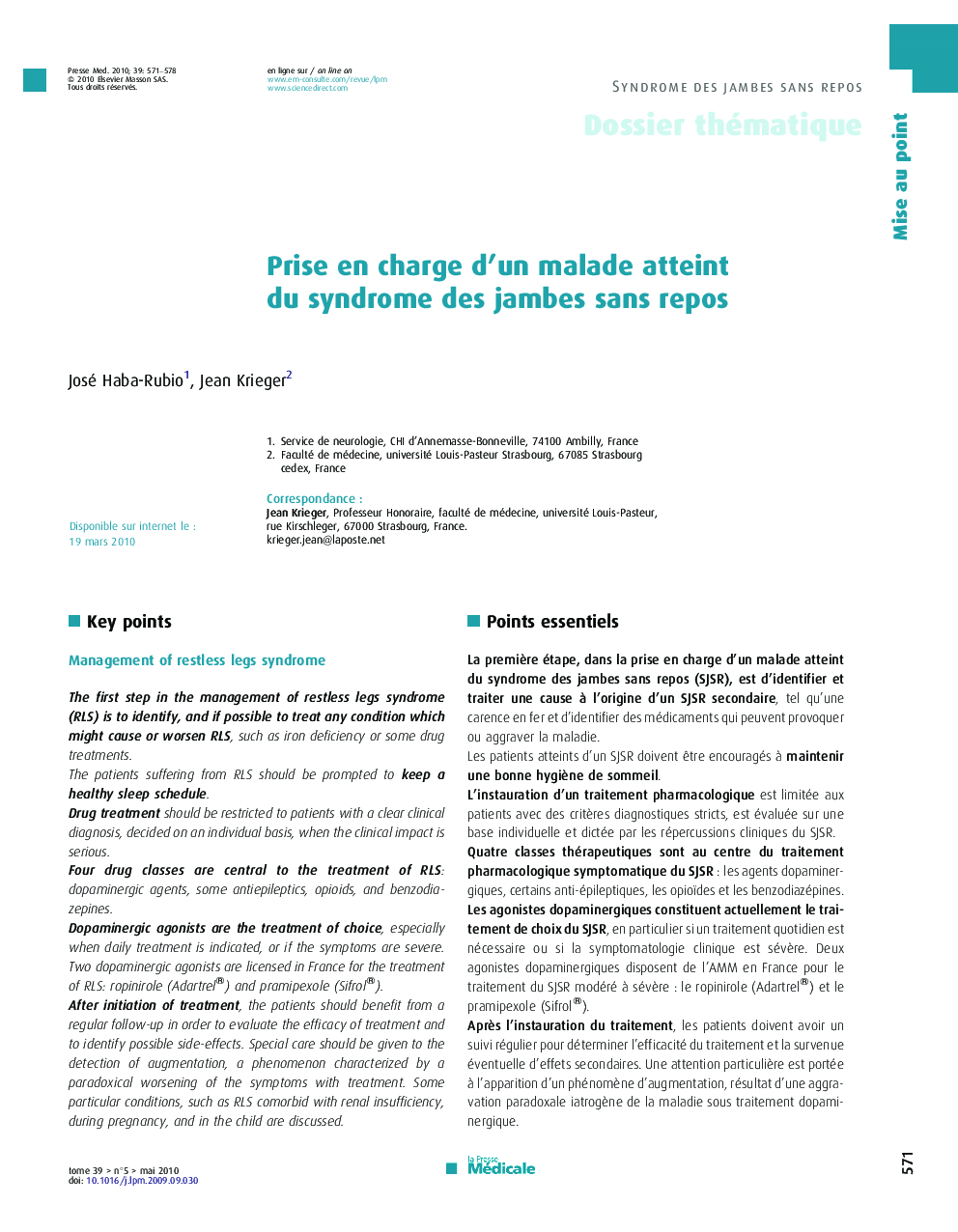| Article ID | Journal | Published Year | Pages | File Type |
|---|---|---|---|---|
| 3820531 | La Presse Médicale | 2010 | 8 Pages |
Points essentielsLa première étape, dans la prise en charge d’un malade atteint du syndrome des jambes sans repos (SJSR), est d’identifier et traiter une cause à l’origine d’un SJSR secondaire, tel qu’une carence en fer et d’identifier des médicaments qui peuvent provoquer ou aggraver la maladie.Les patients atteints d’un SJSR doivent être encouragés à maintenir une bonne hygiène de sommeil.L’instauration d’un traitement pharmacologique est limitée aux patients avec des critères diagnostiques stricts, est évaluée sur une base individuelle et dictée par les répercussions cliniques du SJSR.Quatre classes thérapeutiques sont au centre du traitement pharmacologique symptomatique du SJSR : les agents dopaminergiques, certains anti-épileptiques, les opioïdes et les benzodiazépines.Les agonistes dopaminergiques constituent actuellement le traitement de choix du SJSR, en particulier si un traitement quotidien est nécessaire ou si la symptomatologie clinique est sévère. Deux agonistes dopaminergiques disposent de l’AMM en France pour le traitement du SJSR modéré à sévère : le ropinirole (Adartrel®) et le pramipexole (Sifrol®).Après l’instauration du traitement, les patients doivent avoir un suivi régulier pour déterminer l’efficacité du traitement et la survenue éventuelle d’effets secondaires. Une attention particulière est portée à l’apparition d’un phénomène d’augmentation, résultat d’une aggravation paradoxale iatrogène de la maladie sous traitement dopaminergique.
Key pointsThe first step in the management of restless legs syndrome (RLS) is to identify, and if possible to treat any condition which might cause or worsen RLS, such as iron deficiency or some drug treatments.The patients suffering from RLS should be prompted to keep a healthy sleep schedule.Drug treatment should be restricted to patients with a clear clinical diagnosis, decided on an individual basis, when the clinical impact is serious.Four drug classes are central to the treatment of RLS: dopaminergic agents, some antiepileptics, opioids, and benzodiazepines.Dopaminergic agonists are the treatment of choice, especially when daily treatment is indicated, or if the symptoms are severe. Two dopaminergic agonists are licensed in France for the treatment of RLS: ropinirole (Adartrel®) and pramipexole (Sifrol®).After initiation of treatment, the patients should benefit from a regular follow-up in order to evaluate the efficacy of treatment and to identify possible side-effects. Special care should be given to the detection of augmentation, a phenomenon characterized by a paradoxical worsening of the symptoms with treatment. Some particular conditions, such as RLS comorbid with renal insufficiency, during pregnancy, and in the child are discussed.
